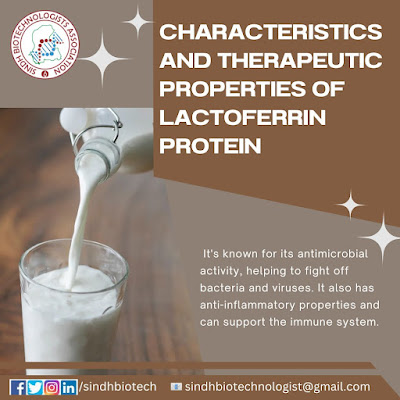Therapeutic enzymes and their extensive applications in the healthcare sector
Therapeutic enzymes are enzymes that are used to treat diseases or conditions. Enzymes are proteins that catalyze chemical reactions in the body, and they play a crucial role in many biological processes.
Therapeutic enzymes are frequently employed to treat diseases brought on by a lack or failure of a particular enzyme. Therapeutic enzymes can be utilized to replace the deficient enzyme and improve the disorder's symptoms. Depending on the particular enzyme and the ailment being treated, they can be obtained from a range of sources, including plants, animals, and microbes, and can be delivered orally, intravenously, or topically.
Some applications of the therapeutic enzymes include:
1- Degradation of necrotic tissue:
Debridement is the removal of necrotic tissues from a lesion, which allows the site to heal properly and minimises the risk of bacterial infection. Proteolytic enzymes, such as trypsin, chymotrypsin, and bromelain, are responsible for the elimination. These enzymes also serve an anti-inflammatory function.
2- Use of enzymes in inflammation and pain control:
Trypsin and chymotrypsin, which are used to treat bronchial asthma and burns, also work as anti-inflammatory agents by degenerating immune response signalling molecules. Along with anti-inflammatory properties, proteolytic enzymes have analgesic effects via altering nociceptors, which are sensory receptors that induce pain in reaction to a stimulus. The analgesic effect of proteolytic enzyme has been observed in people suffering from rheumatic diseases.
3- Removal of blood clots:
Another application for therapeutic enzymes is the removal of blood clots in patients with cardiovascular disorders. The clot breaks down as a result of the tissue plasminogen activator (t-PA), a thrombolytic drug, activating into plasmin and solubilizing the fibrin, the substance that holds the clot together. When a person has emergency surgery, the creation of blood clots is essential for the healing of the wounds. However, the t-PA dissolves the clot without adversely affecting the blood's coagulation mechanism. Streptokinase and urokinase both have the ability to break down blood clots, but they also prevent the creation of new clots when the body need them to stop excessive bleeding.
4- Enzymes used in skin care system:
Since enzymes are more on the milder side than other chemicals, such as acids, thus, they are now being employed in cosmetics for the purposes of exfoliation and anti-inflammation. The majority of enzymes act by destroying the keratin protein, which is found in great abundance in dead skin cells, leading to considerably smoother skin. These include lipases, proteolytic enzymes, and superoxide dismutase (SOD) enzyme. The superoxide dismutase (SOD) enzyme is an oxidoreductase that participates in oxidation and reduction reactions. Due to its anti-inflammatory, anti-aging, and anti-wrinkling properties, it is incorporated as an active component in numerous commercial skincare products. Due to SODs' dual roles as oxidising and reducing agents, they combat photoaging and the loss of skin that comes with getting older. Fruits that contain these enzymes, such as papain, pineapple, or blueberries, can be utilised for skin enzyme therapy. In cosmetic goods, lipases are used to remove debris and dead skin cells from the skin's surface. They also help with total body slimming by breaking down fat deposits with the aid of other enzymes. Although there are many potential benefits to using enzymes in the skincare system, they are also quite sensitive to changes in temperature and pH, and they frequently become unstable, losing their ability to function effectively. In order to maintain their effectiveness, it is crucial to store them in a cool, dark location.
Overall, therapeutic enzymes are an important tool in the treatment of a wide range of diseases and conditions. As research in this area continues to advance, we can expect to see even more uses for therapeutic enzymes in the future.
By: Kainat Fatima
References:
https://www.ncbi.nlm.nih.gov/pmc/articles/PMC5011239/
https://www.nytimes.com/1984/11/14/us/enzyme-used-to-dissolve-clots-in-coronaries.html
https://www.self.com/story/are-enzymes-good-for-skin
https://www.byrdie.com/what-are-enzymes-in-skincare-4693687
Sunar, Kiran & Kumar, Umesh & Deshmukh, Sunil. (2016). Recent Applications of Enzymes in Personal Care Products. 10.1016/B978-0-12-802392-1.00012-5.




Comments
Post a Comment